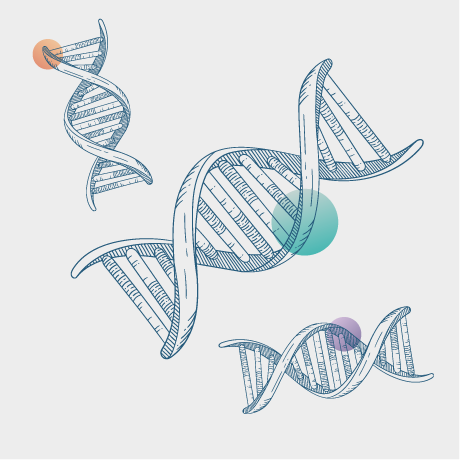
Disease-modifying properties of CGRP pathway mAbs: a debated matter
Data from clinical trials have demonstrated that calcitonin-gene related peptide (CGRP) pathway monoclonal antibodies (mAbs) are equally as effective and more tolerable than other classes of preventive migraine treatments.1 However, one question about this new class of treatments remains: can CGRP pathway mAbs be classified as disease-modifying treatments (DMTs)? As part of the scientific session on CGRP pathway mAbs at the International Headache Congress (IHC) 2021—being held as a joint congress of the International Headache Society (IHS) and the European Headache Federation (EHF)—Prof. Lars Edvinsson (Lund University, Lund, Sweden) and Prof. Elizabeth Leroux (Brunswick Medical Center, Montreal, Canada) debated whether CGRP pathway mAbs have disease-modifying properties. Prof. Edvinsson provided the “pro” argument supporting the disease-modifying effects of CGRP pathway mAbs, opposed by Prof. Leroux’s “con” argument.
Why CGRP pathway mAbs should be classified as DMTs
Prof. Edvinsson started by stating that CGRP pathway mAbs represent a revolution in the scenario of preventive migraine treatment. He then presented data on efficacy and a favorable safety profile that, in his opinion, supported the classification of CGRP pathway CGRP mAbs as DMTs. First, Prof. Edvinsson highlighted that CGRP pathway mAbs are specifically designed according to migraine pathophysiology and show high specificity for their target.2 Next, he presented data demonstrating the efficacy of CGRP pathway mAbs in reducing intensity and frequency of migraine attacks, thus decreasing the burden of disease on patients’ life.3-6 Additionally, Prof. Edvinsson argued that the use of CGRP pathway mAbs might also reduce the risk of medication overuse by decreasing the consumption of acute treatments.6
According to Prof. Edvinsson, the disease-modifying properties of CGRP pathway mAbs would also be supported by their efficacy in reverting chronic migraine (CM) to episodic migraine (EM), with this effect having been shown to persist for over a year.7 Prof. Edvinsson ended by pointing out that CGRP pathway mAbs are characterized by a good tolerability profile—similar to placebo—with the severity of most adverse events (AEs) being mild to moderate.4
Why CGRP pathway mAbs should not be classified as DMTs
Prof. Leroux started her argument by clarifying that, in her opinion, the questionable point is not whether CGRP pathway mAbs are effective or not, but whether they can be defined as DMTs. She explained that all DMTs should meet two main criteria: 1) alter the expected course of the disease beyond symptom control and 2) slow or revert the pathophysiological processes leading to disease progression. In Prof. Leroux’s opinion, the first reason why CGRP pathway mAbs are not DMTs is that migraine is not a progressive or degenerative disease.8 Indeed, the rate of progression of the disease over time is generally low,9 and the likelihood of remission is greater than that of progression.10 Additionally, she noted that migraine remission is possible even without the help of any treatments. In fact, as Prof. Leroux explained, certain changes in patients’ behavior might act as “disease-modifiers” and decrease the frequency and intensity of migraine attacks.11
Prof. Leroux also presented data showing that after discontinuation of CGRP pathway mAbs, the beneficial effects of the treatments only persisted for a limited time.12 In her opinion, these results suggest that CGRP pathway mAbs do not exert a long-term disease-modifying effect on migraine pathophysiology. Moreover, Prof. Leroux remarked that the current lack of reliable biomarkers precludes identification of any possible changes exerted by CGRP pathway mAbs on migraine pathophysiology.13
Prof. Leroux concluded that, in future, the definition of precise treatment goals and the identification of biomarkers for migraine progression might help to better assess the disease-modifying properties of CGRP pathway mAbs. However, in her opinion, defining these treatments as DMTs is currently “excessive and premature”.
There is no doubt that CGRP pathway mAbs are a scientific breakthrough in the field [of migraine care].
Drellia K, Kokoti L, Deligianni CI, Papadopoulos D, Mitsikostas DD. Anti-CGRP monoclonal antibodies for migraine prevention: A systematic review and likelihood to help or harm analysis. Cephalalgia 2021;41:851-64.
Edvinsson L, Haanes KA, Warfvinge K, Krause DN. CGRP as the target of new migraine therapies - successful translation from bench to clinic. Nat Rev Neurol 2018;14:338-50.
Huang IH, Wu PC, Lin EY, Chen CY, Kang YN. Effects of Anti-Calcitonin Gene-Related Peptide for Migraines: A Systematic Review with Meta-Analysis of Randomized Clinical Trials. Int J Mol Sci 2019;20.
Xu D, Chen D, Zhu LN, et al. Safety and tolerability of calcitonin-gene-related peptide binding monoclonal antibodies for the prevention of episodic migraine - a meta-analysis of randomized controlled trials. Cephalalgia 2019;39:1164-79.
Han L, Liu Y, Xiong H, Hong P. CGRP monoclonal antibody for preventive treatment of chronic migraine: An update of meta-analysis. Brain Behav 2019;9:e01215.
Zhu Y, Liu Y, Zhao J, Han Q, Liu L, Shen X. The efficacy and safety of calcitonin gene-related peptide monoclonal antibody for episodic migraine: a meta-analysis. Neurol Sci 2018;39:2097-106.
Lipton RB, Tepper SJ, Silberstein SD, et al. Reversion from chronic migraine to episodic migraine following treatment with erenumab: Results of a post-hoc analysis of a randomized, 12-week, double-blind study and a 52-week, open-label extension. Cephalalgia 2021;41:6-16.
Global, regional, and national burden of migraine and tension-type headache, 1990-2016: a systematic analysis for the Global Burden of Disease Study 2016. Lancet Neurol 2018;17:954-76.
Buse DC, Greisman JD, Baigi K, Lipton RB. Migraine Progression: A Systematic Review. Headache 2019;59:306-38.
May A, Schulte LH. Chronic migraine: risk factors, mechanisms and treatment. Nat Rev Neurol 2016;12:455-64.
Schwedt TJ. Preventive Therapy of Migraine. Continuum (Minneap Minn) 2018;24:1052-65.
Kuruppu DK, North JM, Kovacik AJ, Dong Y, Pearlman EM, Hutchinson SL. Onset, Maintenance, and Cessation of Effect of Galcanezumab for Prevention of Migraine: A Narrative Review of Three Randomized Placebo-Controlled Trials. Adv Ther 2021;38:1614-26.
Durham P, Papapetropoulos S. Biomarkers associated with migraine and their potential role in migraine management. Headache 2013;53:1262-77.



